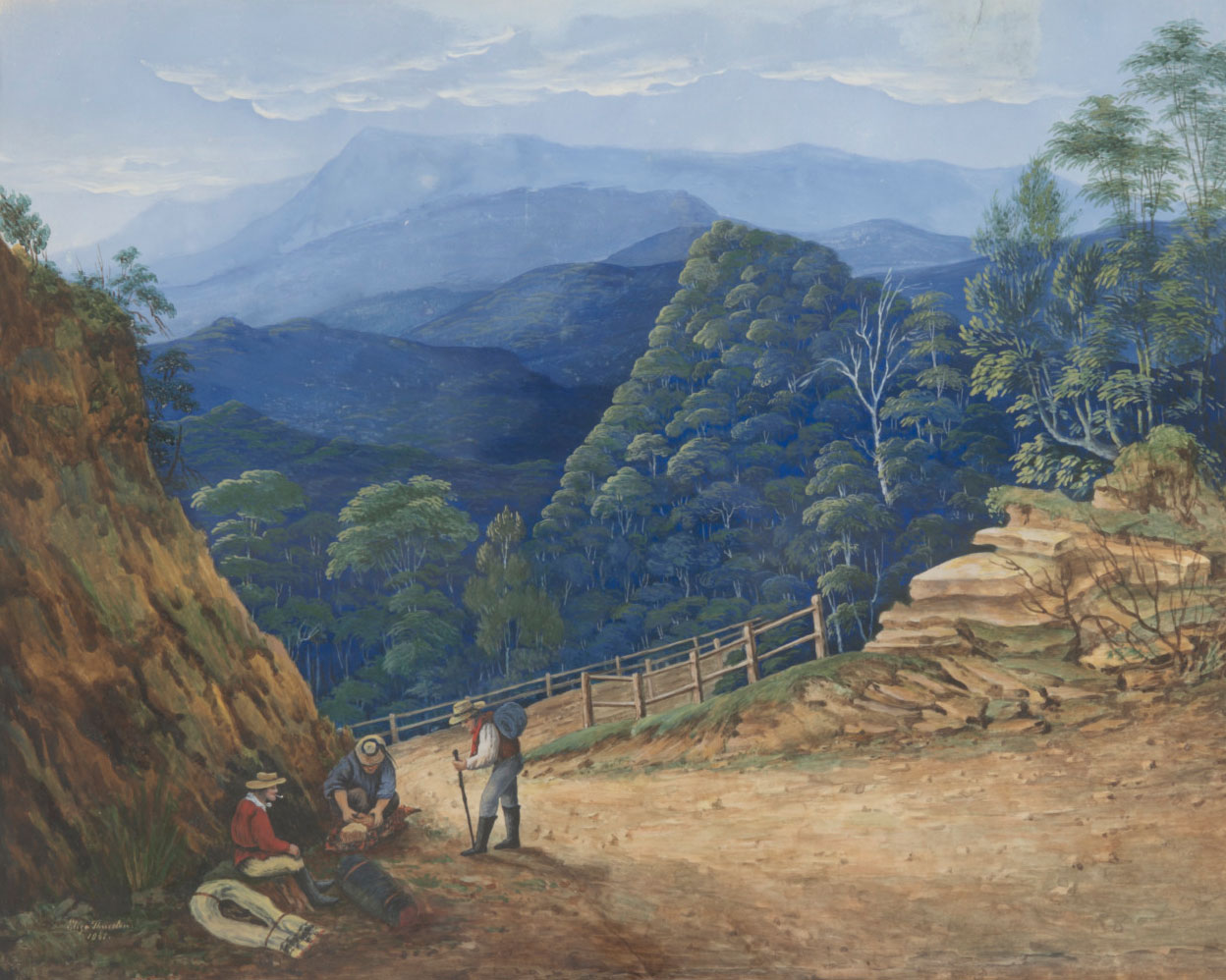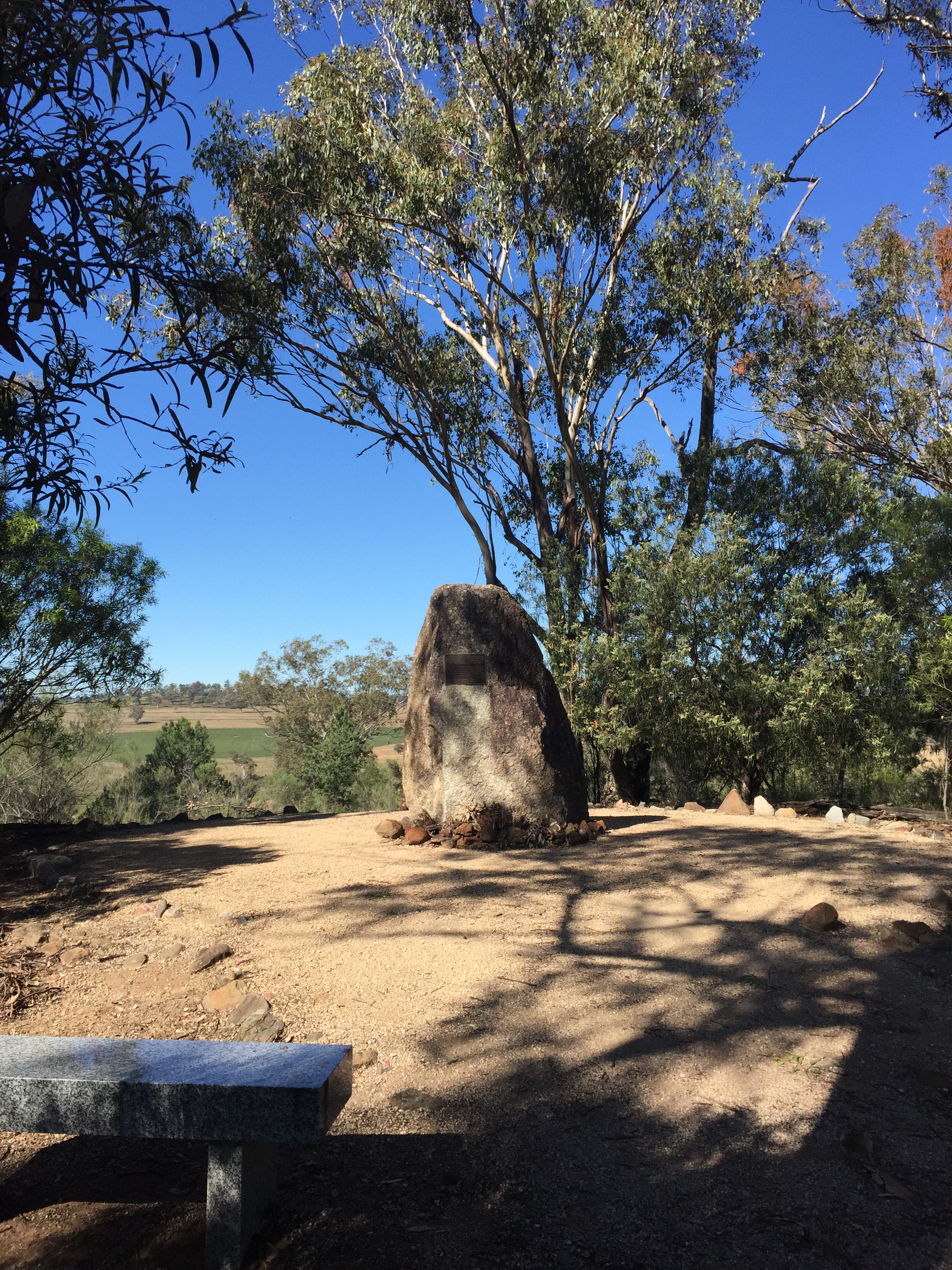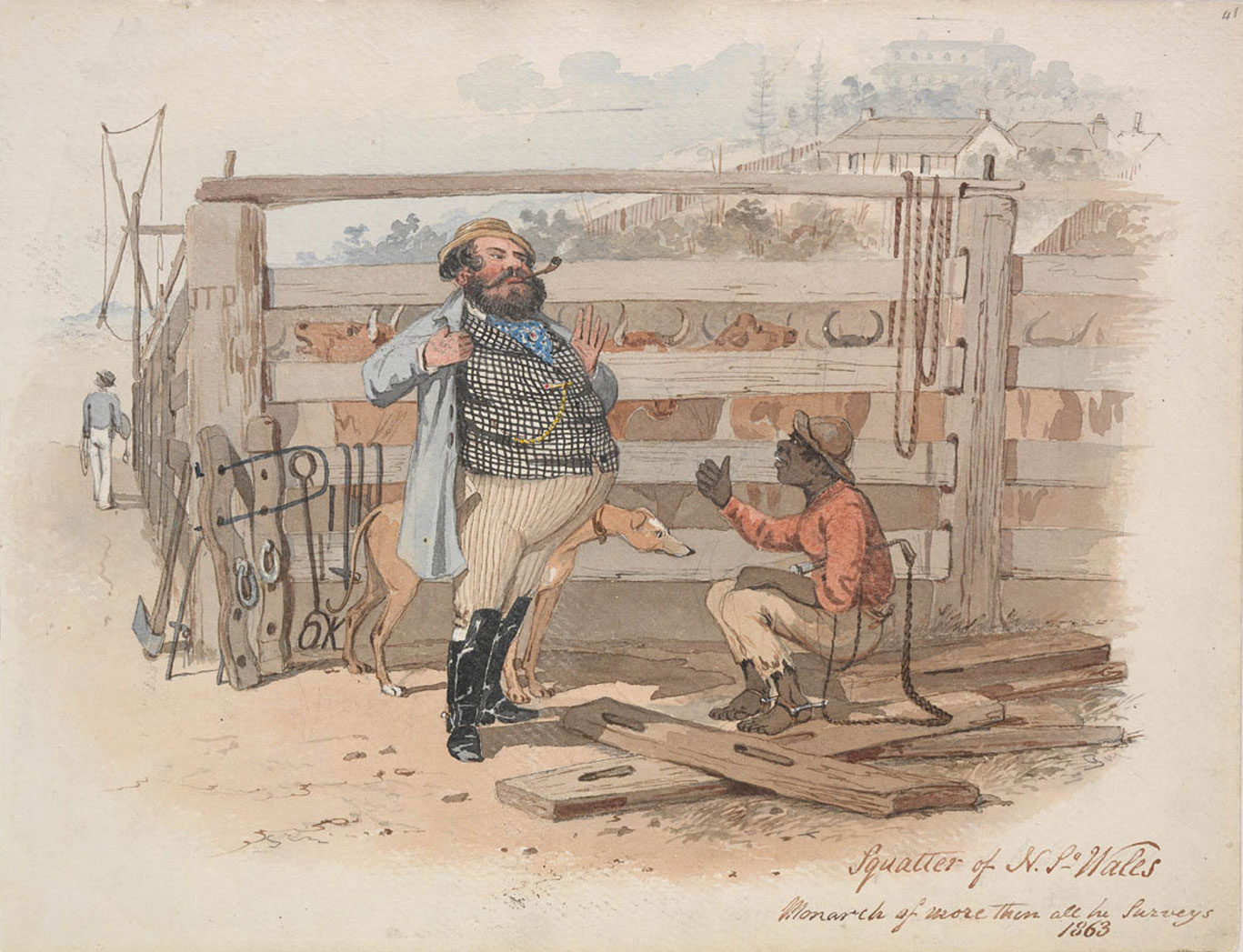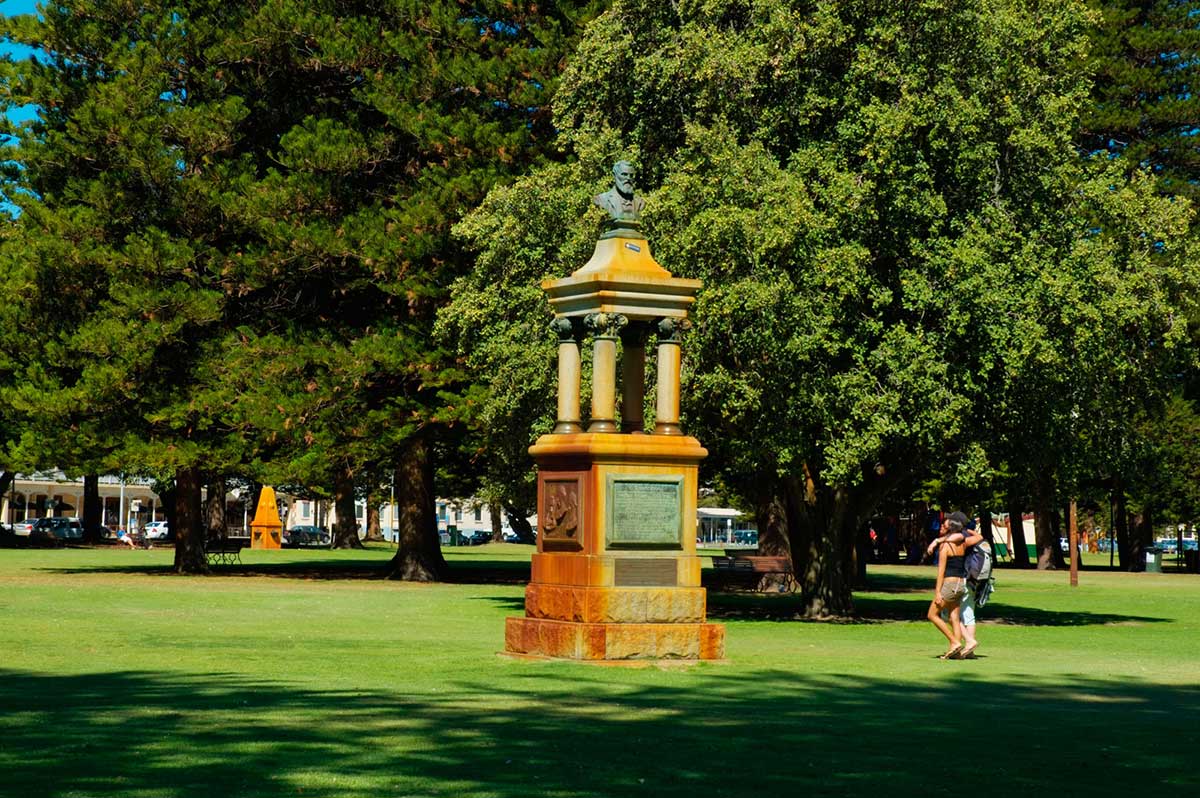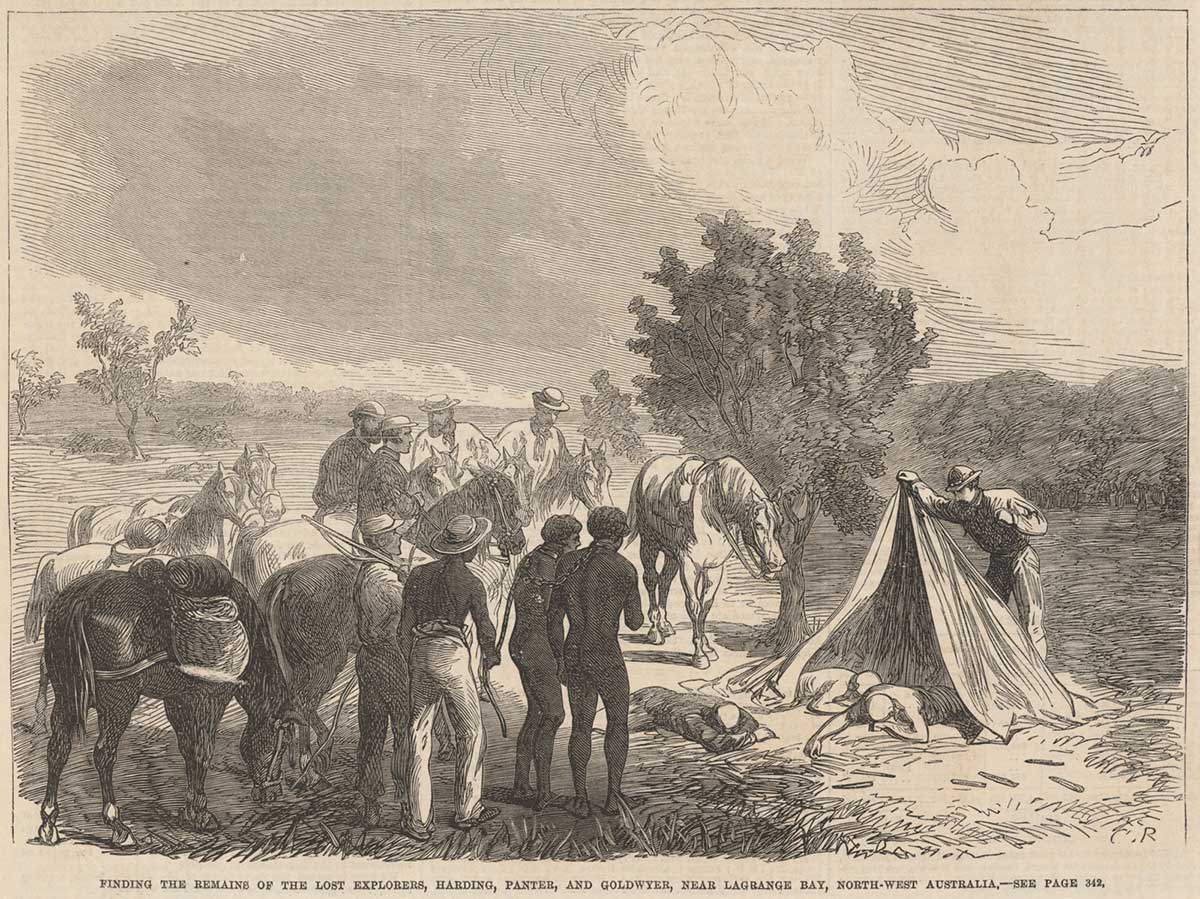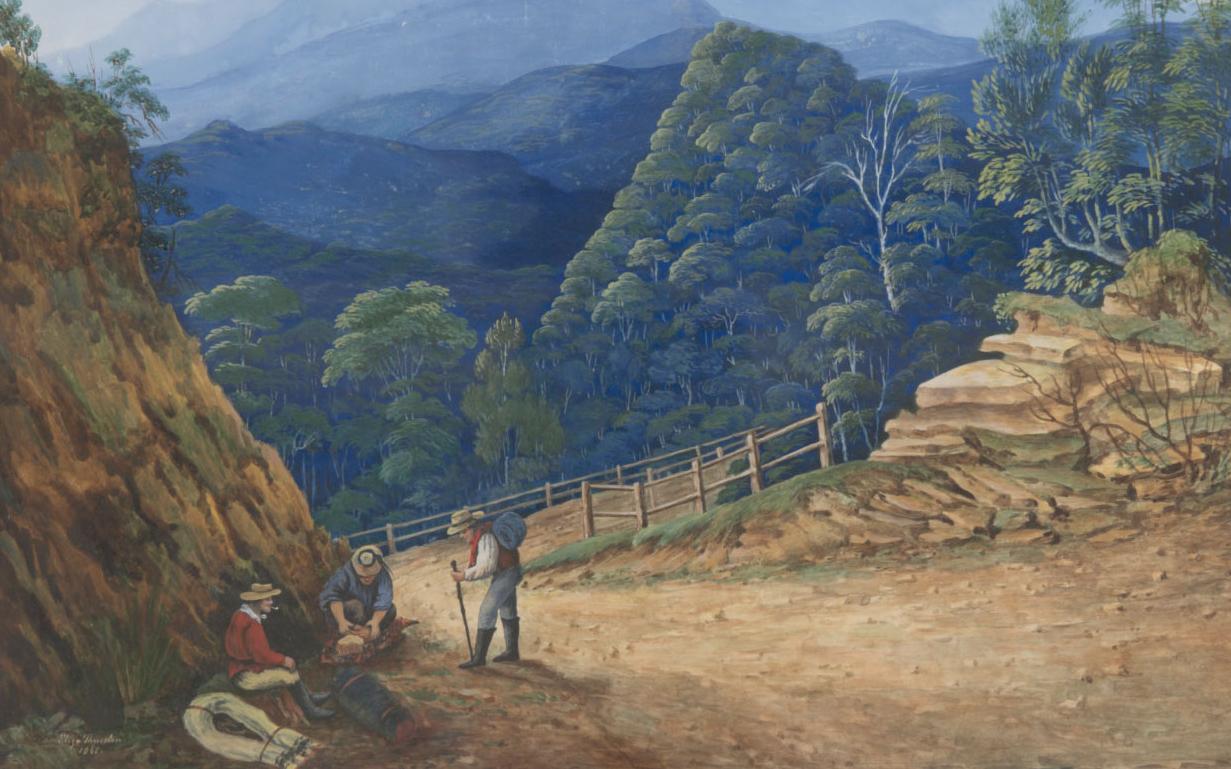Learning module:
Making a nation Defining Moments, 1750–1901
Investigation 1: Contact and conflict
1.3 1830 A human hunt: The ‘Black Line’
| WARNING: This page contains some difficult and potentially distressing content |
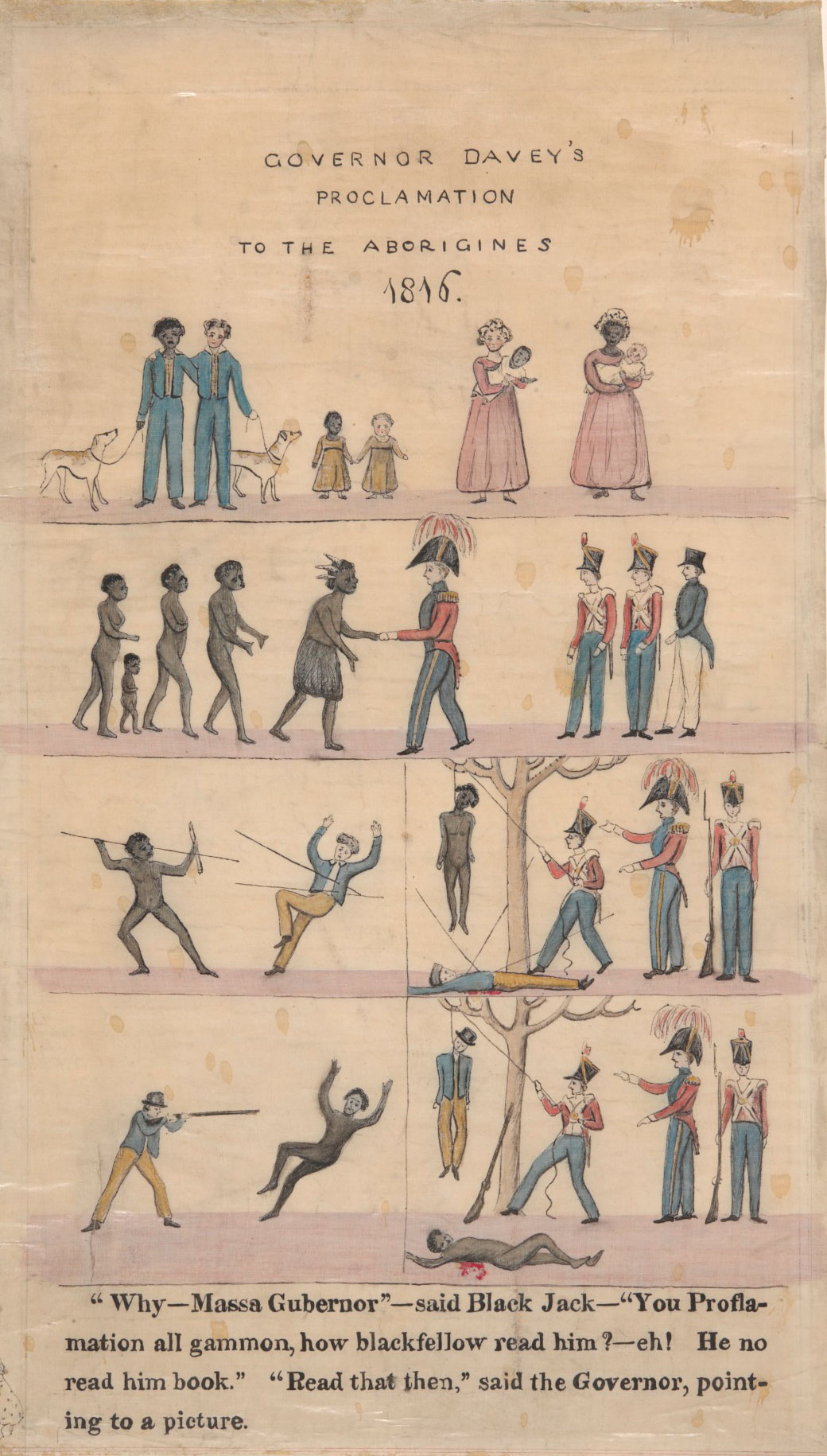
Europeans started colonising Van Diemen’s Land (Tasmania) from 1803. The new settlers wanted land to graze their sheep and create farms. Grazing sheep created competition for grass and water with the kangaroos that were a major source of food for Aboriginal people. The occupying of land, clearing of vegetation and building of fences also interfered with Aboriginal sacred areas, and with traditional seasonal patterns of movement.
How would the two groups respond to this contact and competition?
Read the Defining Moment in Australian history: 1830 The ‘Black Line’ — settler force attempts to corral Aboriginal people on the Tasman Peninsula. Use that information to answer these questions.
1. Why did the British create a settlement at Risdon Cove in 1803?
2. What impacts did the spread and growth of the British settlement have on Aboriginal people?
3. Why was the ‘Black War’ one of the most extensive conflicts in Australian history?
4. What was Governor George Arthur’s first response to the rising conflict?
5. Look at Governor Arthur’s Proclamation to the Aborigines. What do you think the message is? Would Aboriginal people understand what it was trying to say? Explain your answer.
6. What was the ‘Black Line’?
7. Look at this map of the ‘Black Line’ introduced by the government, dated 1831. What does it tell you about what the government was trying to do?
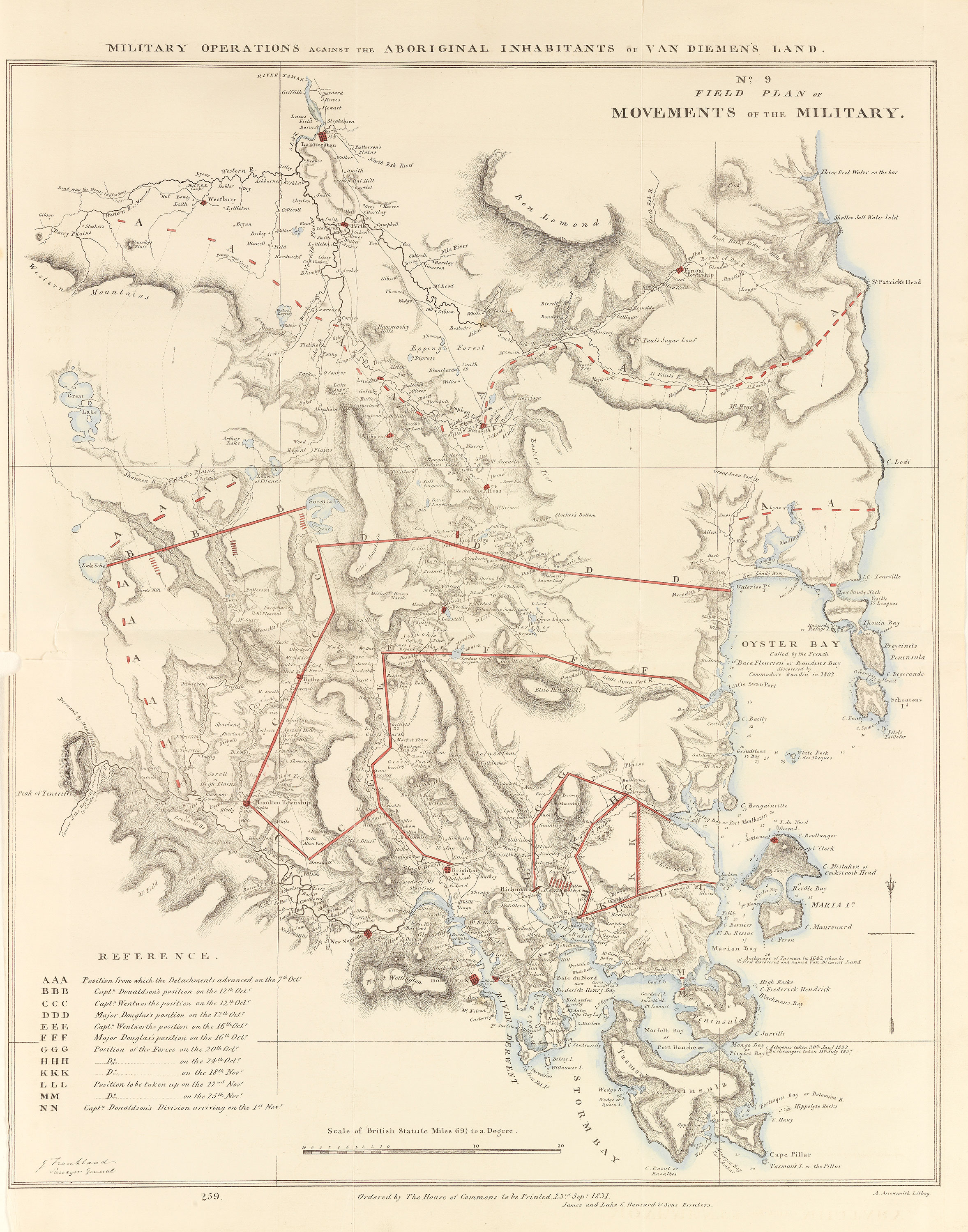
8. What were the short term and long term results of the strategy?
9. What happened to the Aboriginal people at Oyster Bay?
10. What does this event help you understand about the impacts of the extension of colonisation during the nineteenth century?
11. Why was this Defining Moment so significant in Australian history?
12. If you were advising the National Museum of Australia on an object that it could display to tell the story of this event, what would you suggest? (You can see what objects they actually have using the National Museum of Australia collections search)







